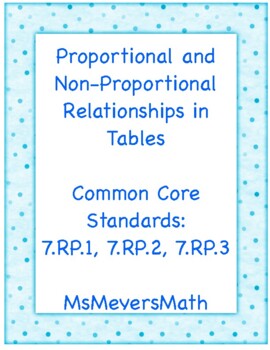Proportional & Non-Proportional Tables Task Cards and Google Acitivites
- PDF
- Google Apps™

Description
UPDATED: Now includes google slide and google form activity that matches the task cards to help with distance learning. (Task Cards and google activity questions are the same).
I used this activity in both my 15:1 and 15:1:1 7th grade math class. The scaffolded answer sheet allowed the students to understand the steps they needed to take to come to an answer.
You can use this product by posting the tables around the room and the students go around with the answer sheet. You could also use it as a station activity.
This goes along with Module 1, The Story of Ratios, it can be used as a supplemental activity. Students find the unit rate (constant of proportionality) from the table and determine if the table is proportional or not and in the other activity students will write the equation in the form y=kx.





